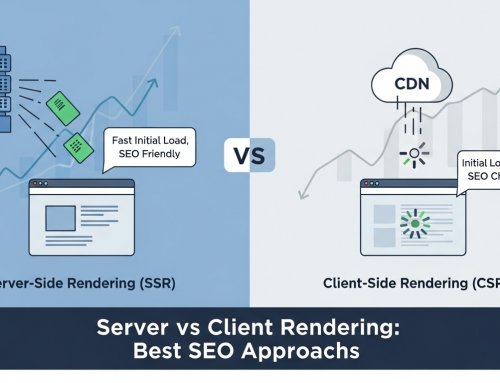Introduction
Search Engine Optimization (SEO) is a critical component of digital marketing, focusing on enhancing a website’s visibility in search engine results. At the heart of effective SEO lies keyword optimization, which involves selecting the right terms that potential visitors are using to search for information. However, many businesses stumble by making common keyword mistakes, such as targeting the wrong keywords or failing to align with user intent. These missteps can significantly impact a website’s visibility and traffic, leading to missed opportunities for engagement and conversions. This article aims to identify these common pitfalls and provide actionable solutions to help you refine your keyword strategy and improve your SEO performance.
Understanding Keywords in SEO
Keywords are specific words or phrases that users input into search engines to find information, products, or services. In the context of Search Engine Optimization (SEO), keywords serve as the bridge connecting searchers with relevant content on websites. By optimizing a site for the right keywords, businesses can improve their chances of ranking higher in search engine results pages (SERPs), ultimately driving more organic traffic.
There are two primary types of keywords: short-tail keywords and long-tail keywords. Short-tail keywords are typically one or two words in length and are more general in nature, such as “shoes” or “travel.” While they attract a larger volume of searches, they also come with high competition and often result in less targeted traffic. On the other hand, long-tail keywords are longer phrases, usually consisting of three or more words, such as “best running shoes for flat feet.” These keywords tend to have lower search volume but offer higher conversion rates as they cater to specific queries, reflecting more precise user intent.
Conducting thorough keyword research is essential for developing an effective SEO strategy. This process involves identifying which keywords are relevant to your business, understanding their search volume and competition, and analyzing the intent behind them. Effective keyword research not only helps in selecting the right keywords but also informs content creation, ensuring that the material meets the needs of your audience while aligning with what search engines are looking for.
Common Keyword Mistakes
1. Focusing on the Wrong Keywords
One of the most significant pitfalls in SEO is targeting the wrong keywords. This often occurs when businesses choose overly competitive or irrelevant keywords that don’t align with their content or audience. For instance, a small local bakery might aim to rank for the keyword “bread,” which is highly competitive and unlikely to drive relevant traffic. Instead, a more focused approach using keywords like “artisan sourdough bread in [city name]” can yield better results. Similarly, targeting niche keywords without sufficient search volume can also hinder performance, as they may not attract enough visitors to justify the effort put into optimization.
2. Ignoring Search Intent
Understanding user intent behind keywords is crucial for successful SEO. Search intent refers to the reason why a user enters a particular query. It can be categorized into informational, navigational, transactional, and commercial investigation intents. Failing to match keywords with the user’s intent can lead to poor engagement and high bounce rates. For example, a user searching for “how to bake a cake” is likely looking for a recipe or tutorial, whereas someone searching for “buy cake online” has a transactional intent. If your content does not align with these intents, users will quickly leave, negatively impacting your site’s rankings.
3. Neglecting Long-Tail Keywords
Long-tail keywords, which are typically longer and more specific phrases, can offer substantial benefits for SEO. These keywords often have lower competition and higher conversion rates because they target users further along in the buying process. However, a common misconception is that long-tail keywords are less effective due to their lower search volume. In reality, they can drive significant traffic and improve engagement when incorporated strategically. For instance, a keyword like “best vegan chocolate cake recipe” may attract a smaller audience but is more likely to engage those specifically searching for vegan options.
4. Keyword Stuffing
Keyword stuffing is the practice of overloading content with keywords in an attempt to manipulate search engine rankings. For example, including a phrase like “buy running shoes” excessively throughout an article can make the content appear unnatural. Search engines like Google have become adept at detecting this practice and penalize sites that engage in it, resulting in lower rankings. Furthermore, keyword stuffing negatively impacts user experience, making content difficult to read and detracting from its quality. It’s crucial to use keywords thoughtfully and organically to maintain both SEO effectiveness and reader engagement.
5. Not Updating Keyword Strategy
SEO is not a one-time task; it requires ongoing analysis and adaptation. The dynamic nature of search trends means that keywords can quickly become outdated or lose relevance. Sticking to an outdated keyword strategy can result in missed opportunities, as user interests and search behaviors evolve. Regularly reviewing and updating your keyword strategy is essential to stay competitive. This involves analyzing performance data, identifying emerging trends, and adjusting your content to align with current keyword effectiveness. By doing so, you can ensure your SEO efforts remain relevant and effective in attracting the right audience.
How to Avoid Keyword Mistakes
1. Conduct Thorough Keyword Research
Effective keyword research is the foundation of a successful SEO strategy. Utilizing tools like Google Keyword Planner, SEMrush, or Ahrefs can help you identify relevant keywords, analyze their search volume, and evaluate competition levels. It’s also important to examine competitors’ keyword strategies to uncover opportunities and gaps in your own approach. By understanding which keywords are driving traffic to competitors, you can adapt your strategy to target similar or related keywords that may yield better results for your website.
2. Align Keywords with User Intent
To avoid mismatches between keywords and user expectations, it’s essential to analyze user intent behind searches. Start by categorizing keywords based on the four primary types of intent: informational, navigational, transactional, and commercial investigation. Once you’ve identified the intent, create content that directly addresses users’ needs. For example, if a user searches for “how to fix a leaky faucet,” providing a detailed guide with step-by-step instructions will satisfy their informational intent. By aligning your keywords with user intent, you enhance engagement and reduce bounce rates.
3. Incorporate Long-Tail Keywords Strategically
Long-tail keywords can significantly improve your SEO efforts, as they target specific queries with higher conversion potential. To find effective long-tail keywords, consider using tools like Ubersuggest or Answer the Public, which can generate relevant phrases based on user questions. Additionally, look at search queries related to your primary keywords in Google’s “People also ask” section. Incorporating these long-tail keywords naturally into your content can lead to higher engagement rates. For example, a case study on a blog targeting “home gardening” found that including long-tail keywords like “best indoor plants for low light” attracted more targeted visitors, resulting in increased conversions.
4. Optimize Content without Keyword Stuffing
To optimize content effectively without falling into the trap of keyword stuffing, focus on natural language and readability. Use keywords strategically in headings, subheadings, and throughout the body, but prioritize flow and context over frequency. Techniques such as synonyms and related phrases can enhance content quality while still signaling relevance to search engines. For instance, instead of repeating “running shoes” excessively, you could use variations like “athletic footwear” or “jogging sneakers.” This approach not only improves SEO but also creates a better reading experience for your audience.
5. Regularly Review and Update Keyword Strategies
SEO is an ongoing process that requires regular monitoring and adjustments to your keyword strategies. Utilize analytics tools, such as Google Analytics and Google Search Console, to track keyword performance and assess traffic trends. Set aside time to review this data monthly or quarterly, adjusting your keyword strategy as needed based on performance insights. Additionally, staying informed about changes in search algorithms and industry trends is crucial. By keeping your keyword strategies fresh and relevant, you ensure that your SEO efforts continue to drive traffic and achieve desired results.
Tools and Resources for Effective Keyword Optimization
Effective keyword optimization relies heavily on utilizing the right tools and resources. Here’s an overview of some popular keyword research tools, as well as additional resources to help you stay informed about SEO best practices.
Popular Keyword Research Tools
- Google Keyword Planner
- Google Keyword Planner is a free tool that allows users to discover new keywords and see how they might perform. By entering a seed keyword or website, users can generate a list of related keywords, along with important metrics such as average monthly searches, competition level, and suggested bid prices for paid advertising. This tool is particularly useful for beginners, as it provides insights directly from the search engine itself.
- SEMrush
- SEMrush is a comprehensive digital marketing tool that offers extensive keyword research capabilities. Users can access keyword volume, difficulty, and trends, as well as competitor keyword analysis. SEMrush also features a Keyword Magic Tool, which allows you to explore related keywords and their variations, making it easier to find long-tail keywords. Additionally, it provides insights into how competitors rank for specific keywords, helping you identify gaps and opportunities in your own strategy.
- Ahrefs
- Ahrefs is another powerful SEO tool that excels in keyword research and analysis. It offers a robust Keywords Explorer feature, which provides detailed metrics for keywords, including search volume, keyword difficulty, and click-through rates. Ahrefs also allows users to see the top-ranking pages for any keyword, along with their backlink profiles, helping you understand what it takes to rank well for specific terms. Its extensive database makes it a favorite among SEO professionals.
- Ubersuggest
- Ubersuggest, created by Neil Patel, is a user-friendly tool that provides keyword suggestions, search volume data, and SEO difficulty scores. It also offers insights into content ideas based on trending topics related to your keywords. Ubersuggest’s intuitive interface makes it accessible for beginners, while still providing valuable information for experienced marketers.
- Answer the Public
- This tool generates keyword ideas based on actual search queries, presenting them in a visually appealing format. By inputting a seed keyword, users can see various questions, prepositions, and comparisons related to that term. This is especially useful for identifying long-tail keywords and understanding the specific questions users have about a topic.
Additional Resources for Staying Updated on SEO Practices
- Blogs
- Moz Blog: Moz provides insights on various SEO topics, including keyword research, algorithm updates, and best practices for optimization.
- Search Engine Journal: This publication covers the latest news in the SEO world, along with practical guides and case studies.
- Neil Patel’s Blog: Neil Patel shares a wealth of knowledge on SEO strategies, including detailed posts on keyword optimization and content marketing.
- Online Courses
- Coursera: Platforms like Coursera offer SEO courses that cover everything from keyword research to advanced optimization techniques, often in collaboration with universities and industry experts.
- Udemy: Udemy features a wide range of SEO courses, many of which focus specifically on keyword research and optimization strategies.
- Communities and Forums
- Reddit: Subreddits like r/SEO and r/bigseo are valuable for connecting with other SEO professionals, sharing knowledge, and discussing the latest trends and tools.
- SEO Facebook Groups: Numerous Facebook groups are dedicated to SEO discussions, where members can share insights, ask questions, and seek advice on keyword strategies.
Conclusion
In conclusion, avoiding common keyword mistakes is essential for achieving effective SEO and driving meaningful traffic to your website. By conducting thorough keyword research, aligning your keywords with user intent, and incorporating long-tail keywords strategically, you can enhance your content’s relevance and engagement. Additionally, optimizing your content without resorting to keyword stuffing and regularly reviewing your keyword strategies will keep your SEO efforts up-to-date in a constantly evolving digital landscape. Implementing these best practices will not only improve your search engine rankings but also create a better user experience, ultimately leading to increased conversions and success for your online presence.






